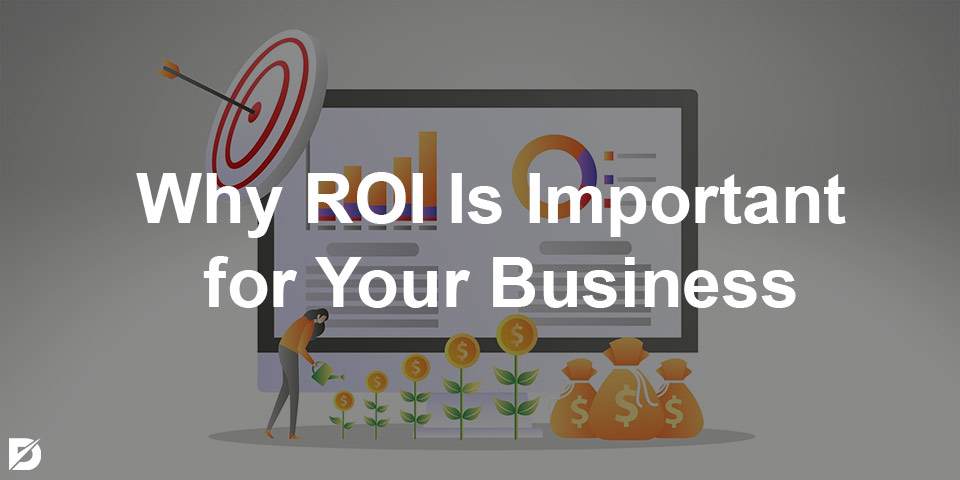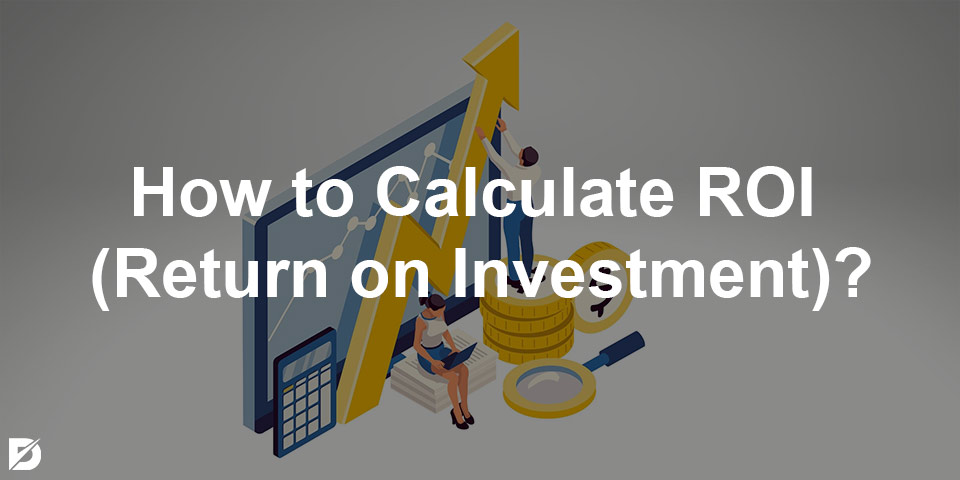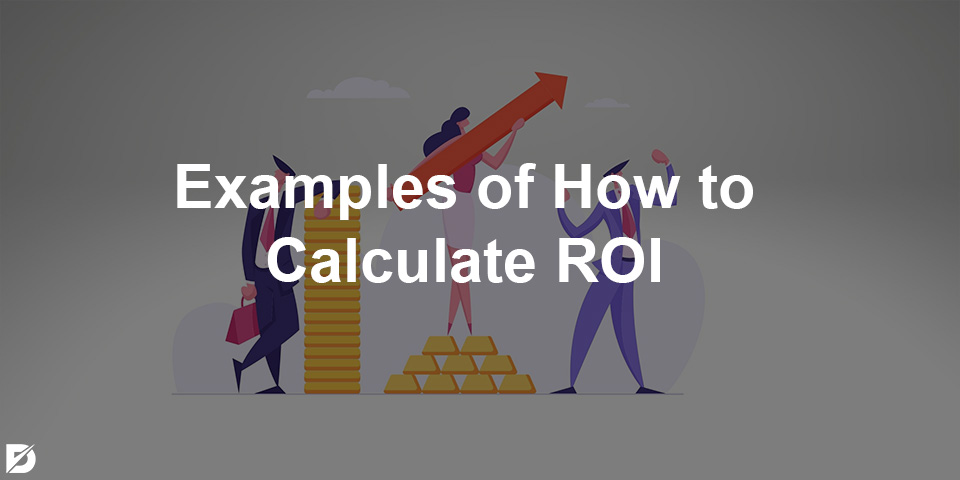Making a profit has always been the goal, even from the earliest traces of what could be called trade. A person invests, as one would expect, in exchange for something. So how do we choose what, how, and where to invest? That’s when ROI (Return on Investment) comes into play.
Humans naturally anticipate seeing the rewards of their efforts. This drive also applies to business and finance. Business owners, investors, or entrepreneurs expect to see both the gains and losses of their investments once they have been made.
You might be an investor or an entrepreneur. If you’re seeking a way to get into the business world, you should be familiar with the financial term ROI (Return on Investment). Whether you are a finance expert or not, you must understand ROI if you want to invest your resources.
For this reason, in this article, we will focus on the meaning and purpose of ROI and how to use it to calculate the return on your investment. We will also provide you with the ROI formula and examples of how to use it for your investments so you can fully understand the calculation process.
ROI (Return on Investment) Meaning
Return on Investment (ROI) is a financial metric that helps determine an investment’s profitability. It represents a return on the cost of your investment. Based on the amount of money invested and the amount of profit or loss obtained, ROI calculates your return on investment. So, it’s a ratio to understand the gap between your cost and your profit/loss.
As suggested by its name, return on investment compares investments and evaluates the profitability of each one. To determine how effective your investment is, it compares your cost to the amount you gained or lost. Therefore, as an investor or entrepreneur, you may calculate the benefit you will receive from the investment cost.

Why ROI Is Important for Your Business
You should be aware that one of the financial metrics for firms, if not the most essential, is return on investment. Whether you’re an investor or an entrepreneur, knowing about return on investment may help your business more than you might think.
Therefore, if you’re wondering why return on investment might be crucial for your business, have a look at the advantages we’ve listed below.
It Allows You to Calculate the Profitability of Your Investment
Throughout each step of your investing process, calculating return on investment is crucial. ROI enables you to evaluate the success of your investment and simplify the complicated investing process. Due to this, investors and entrepreneurs may comprehend their prior investments and identify the most promising investment opportunities.
It Offers A Comparative Analysis of Your Projects
ROI calculations make it easier for you to see the gains and losses from your investments or projects. They also make it simpler for you to rank your projects according to their profitability. It helps measure the potential returns from various investment opportunities and for comparing your various projects with those of your competitors. This could support maximizing your company’s profit.
Remember that after you calculate ROI, you may compare the results of your present investment to those of your previous investments to help you make a better judgment.
It Helps Investors and Entrepreneurs to Save Time and Money
Using the ROI formula is simple to use and straightforward to follow. Even for someone without any financial background, the calculation process is simple.
You may easily measure the success of your investment and its results by using the ROI calculator. This saves time and money by allowing investors and business owners to swiftly assess investment opportunities and make a choice based on the outcomes.

How to Calculate ROI (Return on Investment)?
Unquestionably, maximizing returns on investments is the primary goal of both investors and business owners. They use some financial measurements, such as ROI, to determine the worth or higher return on their investments.
You might be unsure how to calculate the probability of getting a return on your investment and apply it to your business. Due to this, there are a few factors you should consider before you begin the calculation process:
- The ROI calculator emphasizes the net return on investment and the cost of investment.
- Rather than a ratio, ROI findings are commonly described as a percentage.
- The result of the ROI calculation could be positive or negative.
- You should consider both total costs and returns when calculating the net return.
- You should consider not only the investment but also all expenses when calculating overall costs.
- The ROI calculation may be used for a process that lasts for a certain amount of time (3 months, 6 months, or 1 year).
- It’s critical to accurately analyze the results in light of the findings.
You can choose which investment generates the greatest return and which project to avoid by considering the ROI criteria we have listed above. In light of this, be aware that the following steps can be used to calculate return on investment:
- Determine the investment value, which is the amount of money guaranteed to investors or businesses in exchange for their investment.
- Establish the cost of investment, which is the amount of money the company or investor is willing to put into the potential investment.
- Use the ROI formula to calculate the ROI percentage by putting in the numbers you found in stages one and two.
Therefore, if you’re wondering how to calculate ROI efficiently, simply apply the following formula:
Return on Investment (ROI) = (investment value – investment cost) / investment cost

Examples of How to Calculate ROI (Return on Investment)
If you’ve read thus far, you have a firm understanding of return on investment and how to calculate it for your business and upcoming investments. You might be familiar with the ROI formula and what it represents in terms of investment returns. However, unless you use it in a real-world situation, it will only exist on paper.
To give you a better understanding of the ROI calculator and how you may apply it to your investments or projects, we suggest you check the examples we have provided below.
When Your Investment Makes A Profit
Imagine that you run a website where you sell your goods and that each item you manage to sell brings you $200. Your investment will depend on the ads while operating your website. Let’s imagine that only one out of every 50 visitors to your website purchases any of your goods in this instance. Furthermore, you must pay $1 for each visitor to your website to draw them in.
Accordingly, if you spend money on advertising to 50 people, one of them will buy your product, bringing in a profit of $200. In this case, you must first calculate the cost of the advertising investment you will make.
50 (people you try to attract to your website) x $1 (amount of money that you will spend per person) = $50 (cost of investment)
Now that we have the necessary information, let’s calculate ROI:
200 (investment value) – 50 (investment cost) / 50 = 150 / 50 = 3 (ratio) = 300% (percentage)
In this case scenario, you will have a 300% return on investment, implying that you should keep investing.
When Your Investment Makes A Loss
Imagine that you run a bookstore and you consider investing in Facebook advertising strategies. You invest $350 to purchase Facebook advertisements, and you get $75 when those ads bring people to your bookshop.
Now let’s calculate ROI:
75 (investment value) – 300 (investment cost) / 300 = -225 / 300 = -0.75 (ratio) = -75% (percentage)
In this scenario, your return on investment will be -75%, which may imply that you should withdraw your investment to protect your business from future risks.
Conclusion
As a wrap-up, we’ve emphasized the definition and importance of return on investment (ROI) and explained how to calculate ROI in this article. Additionally, we included some instances to illustrate how the ROI calculator functions for your business.
As was previously mentioned, we frequently overlook what follows investment because we are too caught up in the excitement. Once we consider the potential rewards of the investment, we find ourselves concentrating on Return on Investment (ROI). We, therefore, hope that this article has given you a better understanding of the idea of return on investment and the methodology used to calculate ROI.
Frequently Asked Questions About
You will want to know the results of your efforts and the financial return the investment generates when you or your investors invest. ROI enters the picture here. Calculating the financial gains or losses for you or your investors is its primary goal. It computes while taking into account all resources used and any money saved or earned through increased revenue or reduction in costs.
You don’t need to be an expert in finance to measure the return on your projects or investments. There is a method for calculating ROI that you might use to quickly get the net return on investment compared to the total cost.
There are a few disadvantages to using ROI to determine the potential returns on your investment, despite how simple it is to grasp and apply. One of the drawbacks of utilizing ROI is that it does not account for the holding term of an investment, which makes it more challenging to compare investments and identify better ones.
ROI is significant because it may be used to assess the performance of a single investment or a collection of investments and the potential for financial gain. The ROI percentage aids investors in assessing the state of the market and the performance of their investments. This is the essence of what a good ROI is.A high return on investment is provided by a good ROI, which gives investors and business owners the security they need to plan their future investments. A good ROI ultimately depends on the sector you are in and how much money is required for marketing and advertising purchases. While an 11 % return on investment may be a positive sign for some businesses, for others, even a 2,5 percent return on investment may be adequate.Whatever the reason, it still stands that not all investments are wise ones. Thus, we cannot downplay the significance of ROI. No matter how knowledgeable you are about finance, remember that a good ROI will provide you a higher return on investment as long as you take the risk factors, investors, marketing, and advertising into account.
If you’re wondering which industries are taking the higher return on investment in 2025, check the top 10 list below:1. Technology: 23.06 % 2. Basic Materials: 20.55 %3. Consumer Non-Cyclical: 19.49 %4. Capital Goods: 17.39 %5. Consumer Discretionary: 15.22 %6. Energy: 13.72 %7. Conglomerates: 11.59 % 8. Retail: 11.55 %9. Healthcare: 6.72 %10. Transportation: 6.34 %If you’re wondering which industries are taking the lowest return on investment in 2025, check the top 5 list below: 1. Financial: 3.63 %2. Utilities: 4.98 %3. Transportation: 6.34 %4. Healthcare: 6.72 %5. Retail: 11.55 %





No comments to show.